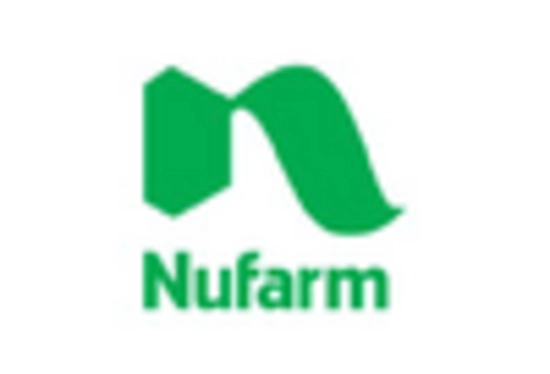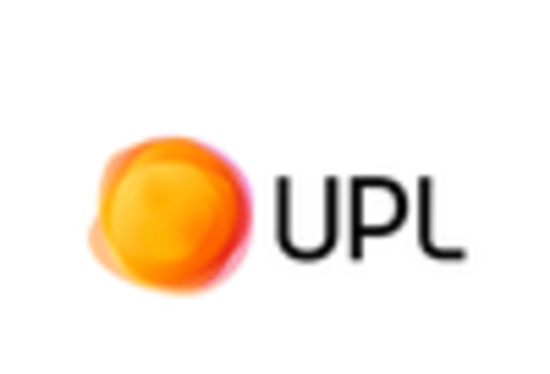Rising Demand for Food Security
The increasing global population has led to a heightened demand for food security, which in turn drives the PPO Herbicide Market. As agricultural practices intensify to meet this demand, the need for effective weed management solutions becomes paramount. PPO herbicides are recognized for their efficacy in controlling a wide range of weeds, thereby enhancing crop yields. According to recent agricultural reports, the herbicide market is projected to grow at a compound annual growth rate of approximately 5% over the next few years. This growth is indicative of the essential role that herbicides, particularly PPO types, play in modern agriculture. Farmers are increasingly adopting these products to ensure that their crops can thrive in competitive environments, thus reinforcing the importance of the PPO Herbicide Market in achieving food security.
Shift Towards Integrated Pest Management
The trend towards integrated pest management (IPM) is significantly influencing the PPO Herbicide Market. IPM strategies emphasize the use of multiple control methods, including biological, cultural, and chemical approaches, to manage pests and weeds sustainably. PPO herbicides fit well within this framework due to their selective action and lower environmental impact compared to traditional herbicides. As more agricultural stakeholders adopt IPM practices, the demand for PPO herbicides is likely to increase. Market data suggests that the adoption of IPM could lead to a 20% increase in the use of selective herbicides, including PPOs, over the next decade. This shift not only supports sustainable agriculture but also enhances the profitability of farming operations, thereby solidifying the role of the PPO Herbicide Market in modern agricultural practices.
Increased Awareness of Herbicide Resistance
The growing awareness of herbicide resistance among farmers is shaping the dynamics of the PPO Herbicide Market. As resistant weed populations become more prevalent, there is a pressing need for effective management strategies. PPO herbicides are often part of resistance management programs due to their unique mode of action. Market data indicates that the demand for PPO herbicides is expected to rise by approximately 10% as farmers seek to diversify their herbicide use to combat resistance. This trend underscores the importance of education and awareness in promoting the adoption of PPO herbicides as a viable solution. By addressing the challenges posed by herbicide resistance, the PPO Herbicide Market is likely to play a crucial role in ensuring sustainable agricultural practices and maintaining crop productivity.
Regulatory Support for Sustainable Herbicides
Regulatory frameworks increasingly favor the use of sustainable herbicides, which is positively impacting the PPO Herbicide Market. Governments and agricultural bodies are implementing policies that encourage the adoption of herbicides with lower environmental footprints. This regulatory support is crucial as it drives research and development in the formulation of safer and more effective PPO herbicides. Market analysis indicates that regions with stringent environmental regulations are witnessing a shift towards the use of PPO herbicides, as they are often perceived as less harmful to non-target species. This trend is likely to continue, with projections suggesting a 15% increase in the market share of sustainable herbicides, including PPOs, over the next five years. Such regulatory influences not only promote environmental stewardship but also enhance the competitiveness of the PPO Herbicide Market.
Technological Innovations in Herbicide Formulation
Technological advancements in herbicide formulation are reshaping the PPO Herbicide Market. Innovations such as microencapsulation and controlled-release formulations enhance the effectiveness and longevity of PPO herbicides in the field. These technologies allow for targeted application, reducing the overall quantity of herbicide needed while maximizing weed control. Recent studies indicate that the introduction of advanced formulations can improve herbicide efficiency by up to 30%. As farmers seek more efficient and environmentally friendly solutions, the demand for these innovative products is expected to rise. The integration of technology in herbicide development not only addresses the challenges of weed resistance but also aligns with the growing emphasis on sustainable agricultural practices, thereby reinforcing the significance of the PPO Herbicide Market.

















Leave a Comment